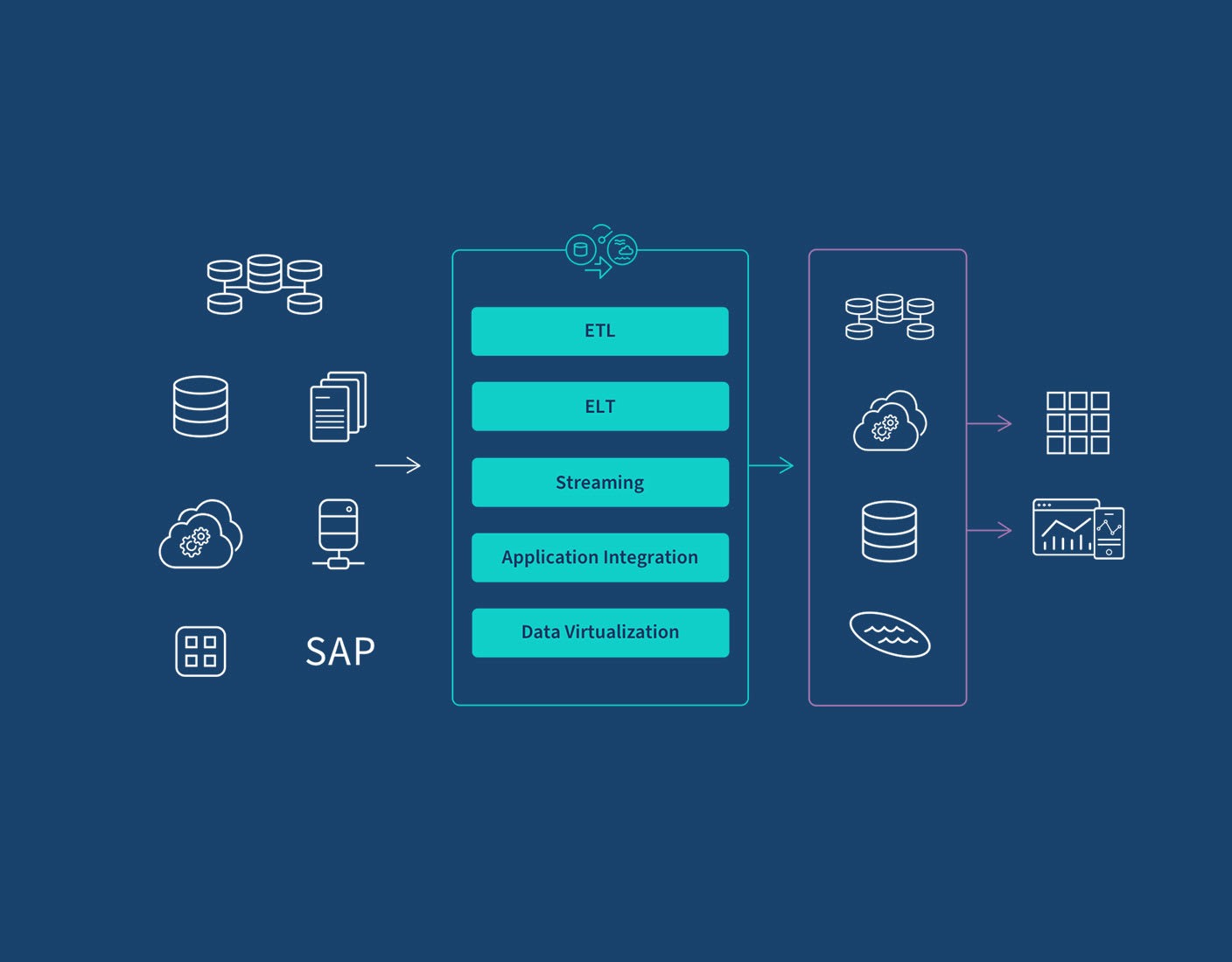
Building a Seamless Analytics Ecosystem with Data Stack Integration
Businesses need accurate and up-to-date information to make smart choices in today’s data-driven world. However, it can be hard to get unified view because data is spread out across many tools and platforms. And this is where data stack integration becomes the basis of a smooth analytics environment, one that lets businesses use all of their data to make better decisions, act faster, and perform better.
Understanding Data Stack Integration
Every modern organization operates with a “data stack,” which refers to the collection of technologies used to gather, process, store, and analyze data. It includes tools for extraction, transformation, loading (ETL), warehousing, business intelligence, and more. Data stack integration brings these tools together so they communicate effectively, removing silos and ensuring that data flows freely from source systems to analytics dashboards.
This integration is essential because disconnected tools often create inconsistencies and inefficiencies. When marketing, finance, and operations teams rely on separate systems, it becomes difficult to align on metrics or identify trends. A well-integrated data stack creates a single version of truth, allowing organizations to make cohesive, data-backed decisions.
The Benefits of a Unified Data Environment
A unified analytics ecosystem offers several advantages beyond simply improving efficiency. One of the biggest benefits is data accuracy. When all systems are connected, duplicate or conflicting information is minimized. Data can be cleaned, standardized, and shared automatically, reducing the manual work often required to prepare it for analysis.
Another benefit is speed. With integration, reports and dashboards can be updated in real time, empowering teams to act on insights immediately. Whether it’s tracking customer behavior, monitoring supply chain performance, or evaluating campaign results, faster access to data means faster response times.
Additionally, integration promotes scalability. As a business grows and adds new tools or data sources, an integrated stack can easily accommodate them. Rather than starting from scratch, organizations can plug new components into an existing framework that’s already optimized for performance and compatibility.
Key Components of a Seamless Analytics Ecosystem
Building a truly seamless ecosystem starts with identifying the right technologies and ensuring they align with business goals. The foundation typically includes:
- Data Sources – These include CRM systems, e-commerce platforms, IoT devices, and other applications that collect raw information.
- ETL or ELT Tools – These solutions extract data from sources, transform it into a consistent format, and load it into a central warehouse.
- Data Warehouse or Lake – A scalable repository that stores structured and unstructured data for easy access and analysis.
- Analytics and BI Tools – Platforms like Tableau, Power BI, or Looker that visualize data and turn it into actionable insights.
When these elements are integrated properly, they function as a unified whole rather than as isolated parts. This ensures that stakeholders at every level—from analysts to executives—can access consistent, real-time insights.
Overcoming Common Integration Challenges
Despite the clear benefits, achieving smooth data stack integration is not without challenges. Legacy systems, incompatible data formats, and poor data governance can all create friction. Organizations must prioritize interoperability and standardization, selecting tools that support APIs or connectors for easy communication.
Another key consideration is data security. Integrating multiple systems increases the surface area for potential breaches, so encryption, access controls, and compliance with privacy regulations are critical. Finally, leadership support is essential. Integration initiatives succeed best when backed by clear strategy, cross-department collaboration, and ongoing investment in maintenance and monitoring.
The Road Ahead
As analytics continue to evolve, integration will remain at the core of effective data strategies. With the rise of AI-driven analytics, machine learning, and real-time data streaming, the need for connected systems has never been greater. A well-integrated data stack allows businesses to keep pace with these innovations, making it easier to leverage predictive analytics, automate decisions, and uncover opportunities faster than competitors.
In essence, data stack integration transforms fragmented systems into a unified, intelligent network that powers insight, agility, and innovation. For any organization seeking to build a seamless analytics ecosystem, integration is not just a technical upgrade—it’s a strategic necessity that drives long-term success.
